Tiber After Dark
Mon Dec 04, 2017 5:19 pmHiking back to our flat, we crossed the Tiber in darkness. Upon awakening the next morning we stopped on Capitoline Hill to take photos of the Roman Forum and King Victor Emmanuel II Monument.
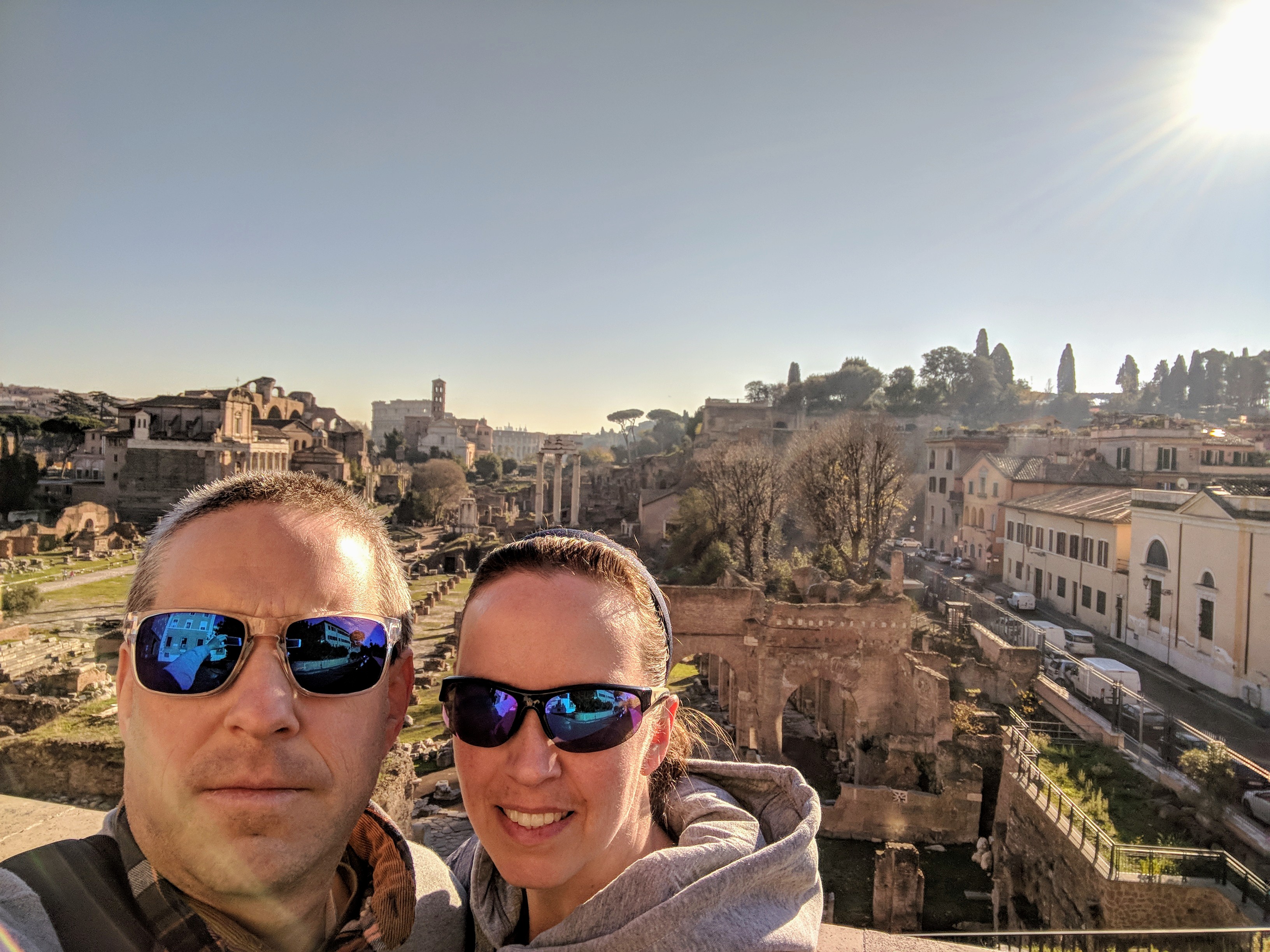
At this angle we are standing immediately below the ruins of the Temple of Jupiter, above which is found the Capitoline Museums.
The three columns sprouting from Mrs. Trent’s hair are a reconstruction of the Temple of Vesta. Scanning from left to right in the distance can be seen massive Basilica di Massenzio, Flavian Amphitheatre, and Palatine Hill. Vesta is the virgin goddess of hearth and home.
Emperor Constantine completed construction of the Basilica of Maxentius, after defeating Maxentius at the Battle of the Milvian Bridge, the outcome of which led Constantine to convert to Christianity. However the Basilica itself is completely secular. Diocletian’s Tetrarchy is the context for the Battle of the Milvian Bridge.
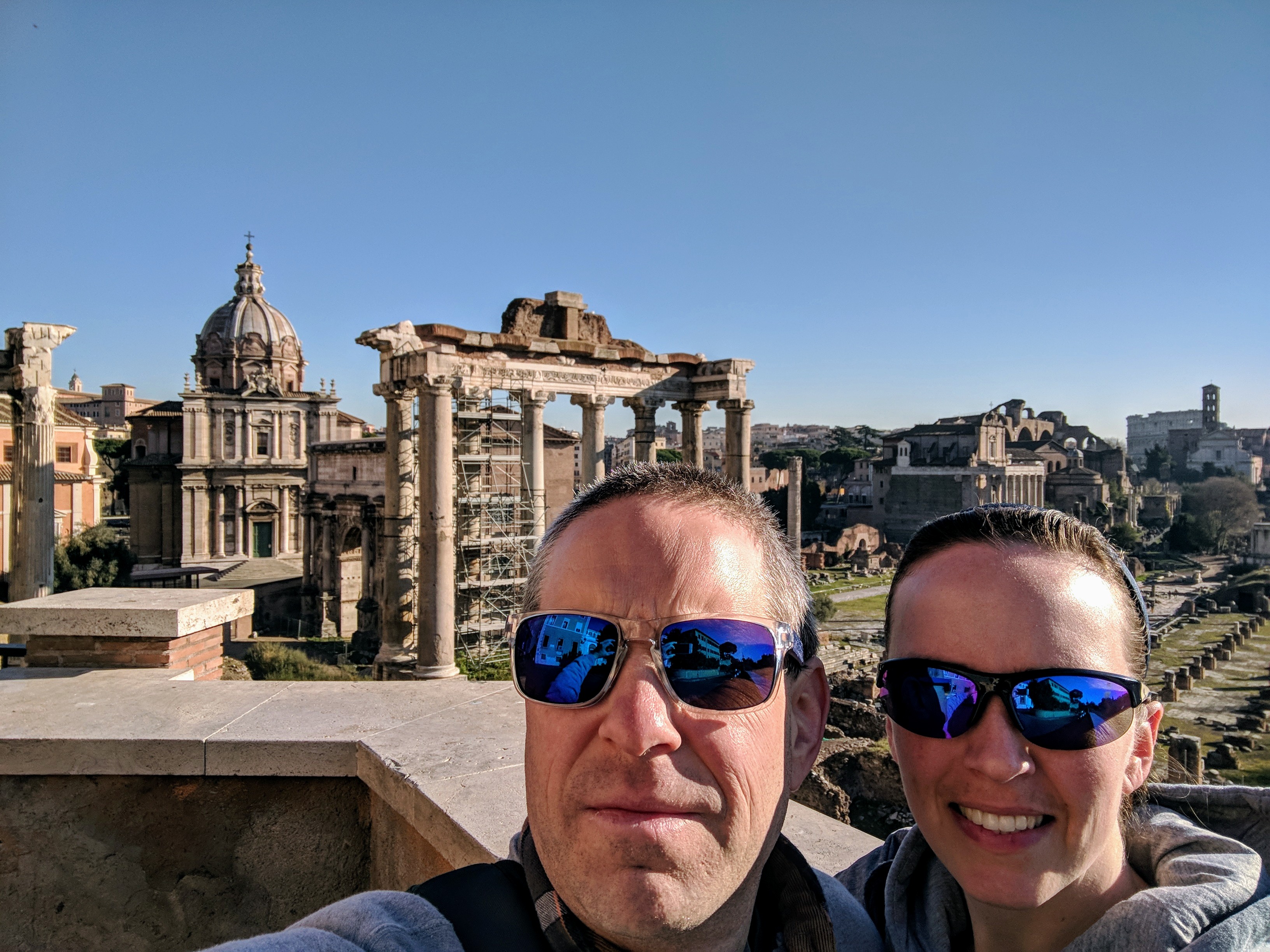
Behind the Temple of Saturn, stands Arch of Septimius Severus, and behind that stands Chiesa dei Santi Luca e Martina, and Curia Julia where the Roman Senate convened.
The Senate was paramount during the Roman Republic, but reduced to a rubber-stamp assembly during the Roman Empire. Unfortunately the manifestation of representative government in Rome was a system of patronage, which focused naturally on local issues, and thus was unable to govern concerns of empire. And it fostered a divide between the Optimates and Populares, which populist autocrats such as Marius and Julius Caesar were able to exploit.
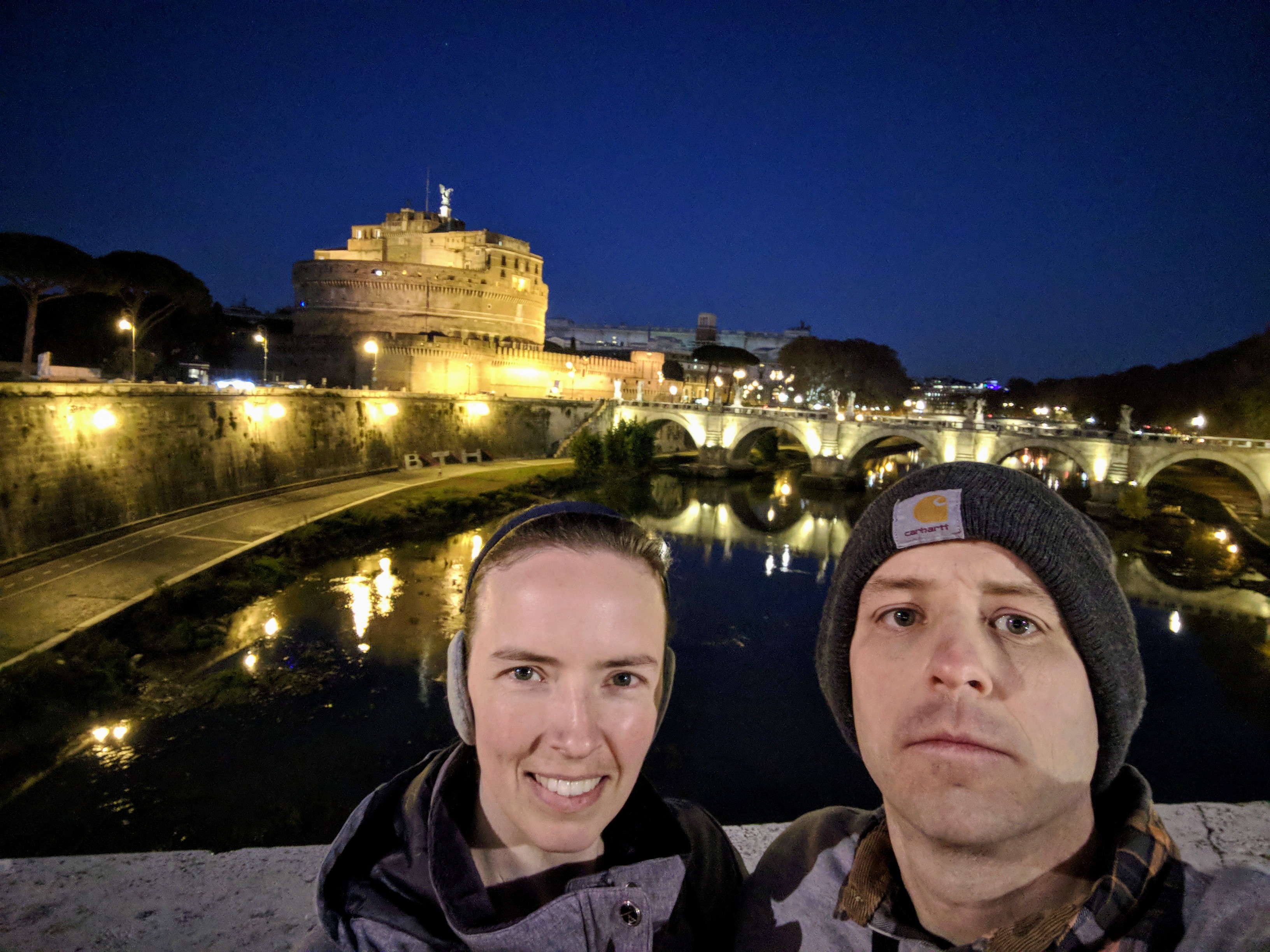
Ponte Sant’Angelo, a bridge that was built in 134 by Emperor Hadrian, leading to Castel Sant’Angelo, originally built as a Mausoleum for Emperor Hadrian, was alternately used as a Fortress and Prison.
For context Hadrian was the successor to Trajan, whose reign was the zenith of the Roman Empire. Hadrian is perhaps even better known for building Hadrian’s Wall, a fortified wall between what is now Scotland and Northern England. Hadrian also rebuilt the Pantheon.
Although built as a mausoleum, Castel Sant’Angelo also served as a refuge of last resort for the Pope during times of seige.
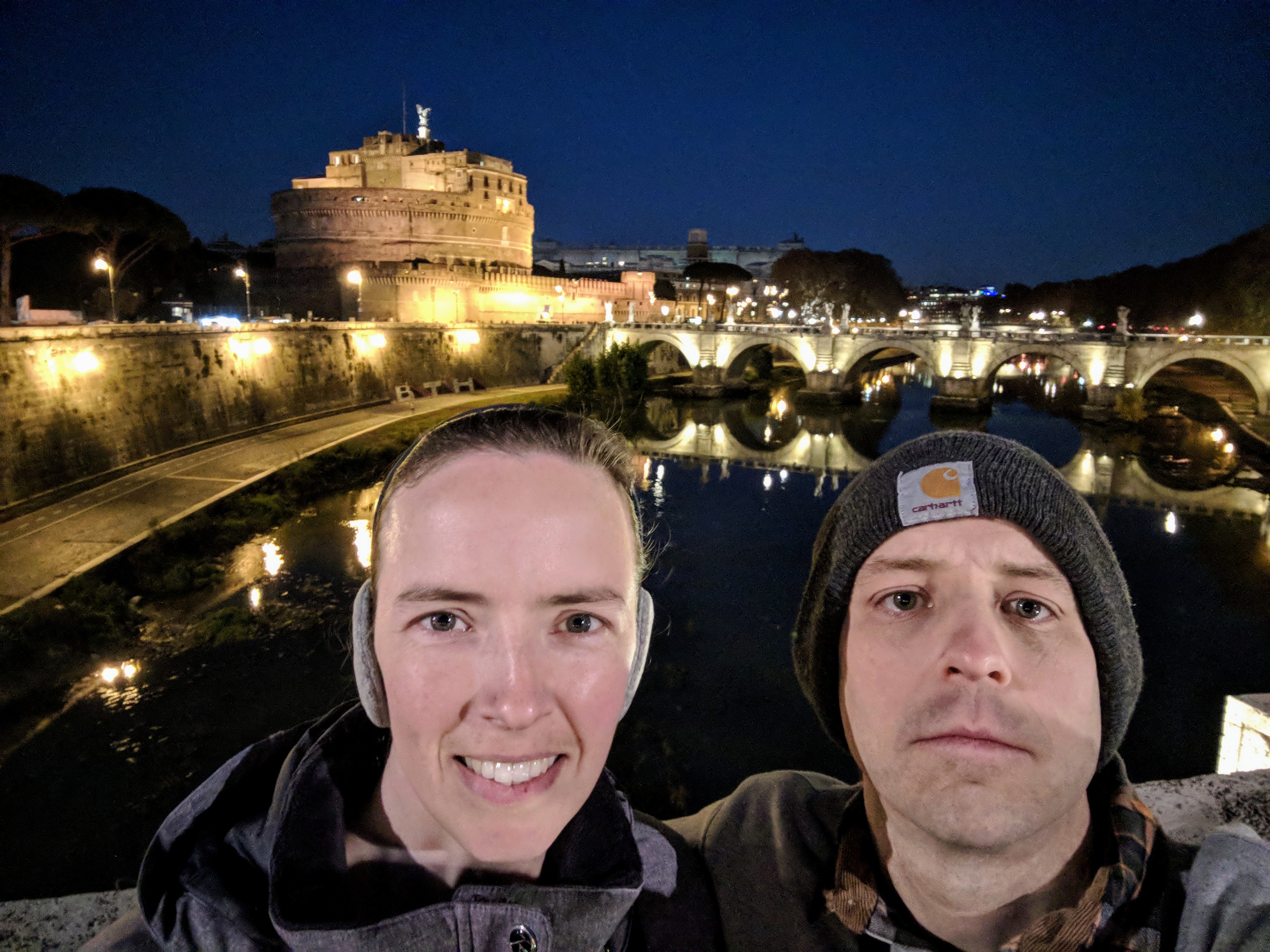
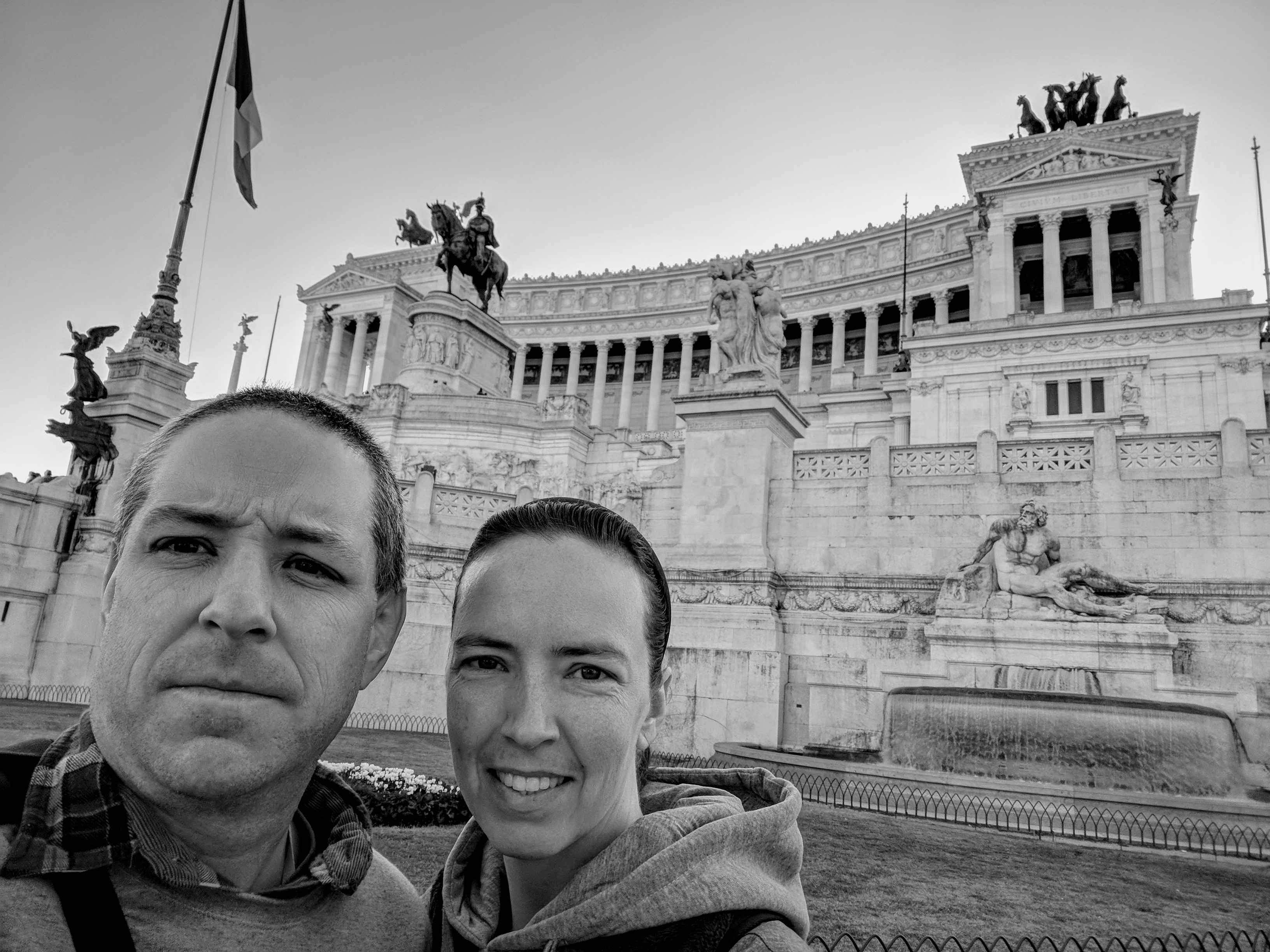
Victor Emmanuel II National Monument is a monument to Italy’s First King and the Unification of Italy. Front and center is Italy’s Tomb of the Unknown Soldier beneath an equestrian statue of the King.
The 1848 SpringTime of the Peoples was a turning point in history, perhaps the point in time when the Enlightenment ended and the Romantic, or Nationalist era began. If Romanticism was the rise of feelings and emotion, then Nationalism was the political manifestation of that! (Music also became much more expressive, such as Ma Vlast by Smetana).
Thus the unification of Italy (and Germany) was a process of accretion that began in 1848 and culminated in 1871, the rise of nation states that was resisted by the existing dynastic world empires at the time. Although paradoxically this period of time also marked the zenith of the British Empire.
Also paradoxically, despite Italian Unification occurring during the Romantic or Nationalist era, the architecture of the monument is firmly neo-Classical.
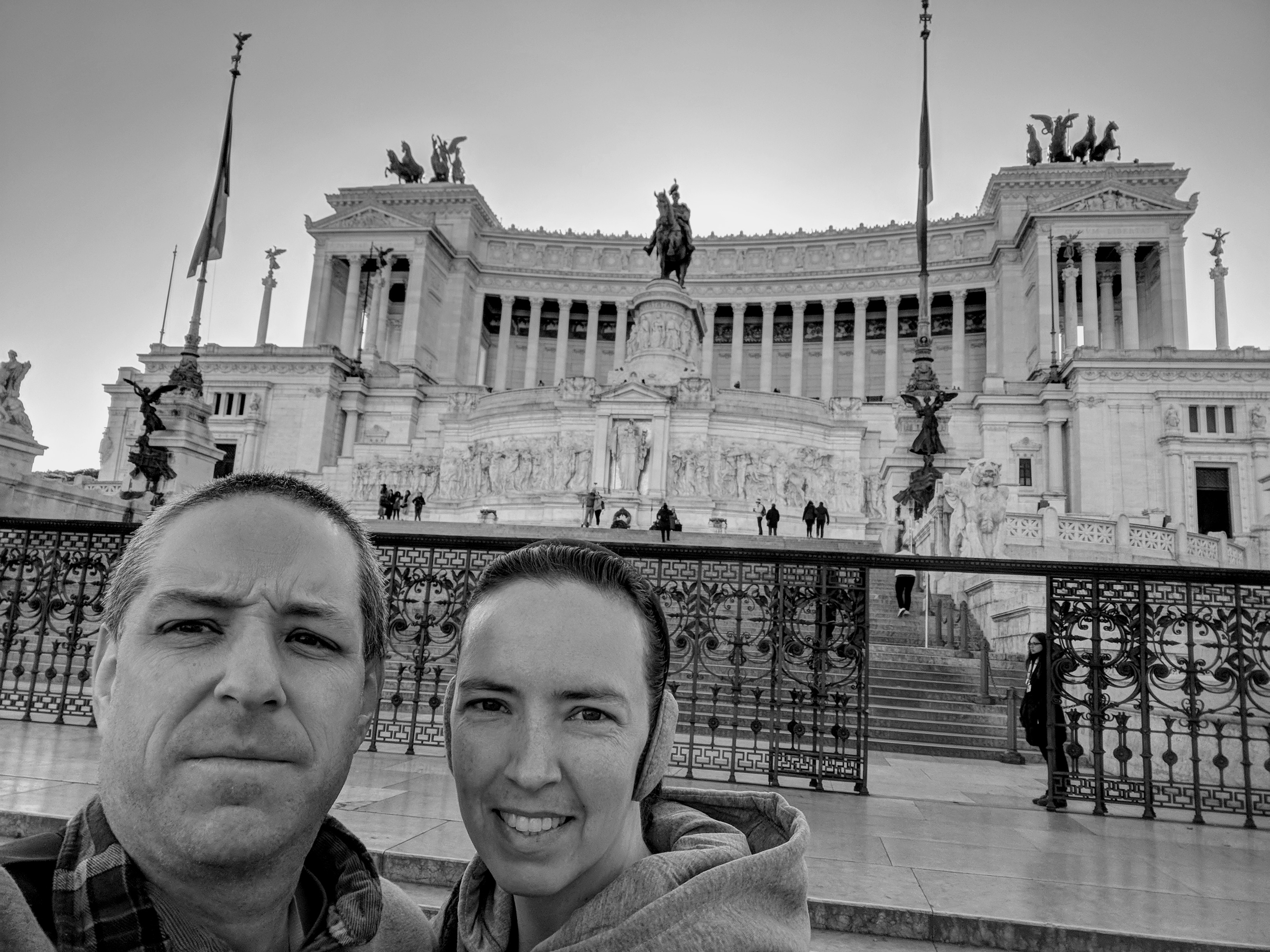
The structure is neo-Classical, but I think the wrought-iron fence in front is art-nouveau.